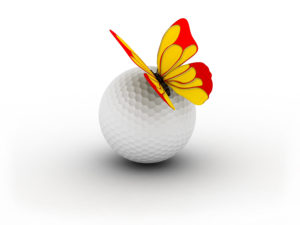
19 Jun Pollinators: Your Behind-the-Scenes Course Staff
 As we all WELL know, there are many contributors to any successful golf course operation. It wouldn’t thrive without the super, pros, investors, players and grounds crew, but other important cast members include natural wildlife and pollinators. They’re responsible for encouraging plant growth and pollinating flowering plants. Integrating wildflowers into your course landscaping is a simple way to support pollinators, and they can bring a whole slew of benefits.
As we all WELL know, there are many contributors to any successful golf course operation. It wouldn’t thrive without the super, pros, investors, players and grounds crew, but other important cast members include natural wildlife and pollinators. They’re responsible for encouraging plant growth and pollinating flowering plants. Integrating wildflowers into your course landscaping is a simple way to support pollinators, and they can bring a whole slew of benefits.
Understanding Pollination
When we think of pollination, it’s most common to think of bees and butterflies, carrying pollen from plant to plant, encouraging reproduction. One of the best parts of golf is the time spent outdoors, seeing birds and wildlife, as well as a variety of beautiful gardens, landscaping and natural wildflowers, and the pollinators are responsible for that beauty.
But pollinators provide a number of additional benefits to a golf course. From a maintenance perspective, it takes less time to maintain wild, natural rough, than to care for dense areas. These areas also require less irrigation and pesticide applications. And even though bees and butterflies win the popularity contest when we think of pollination, there are other pollinating insects—wasps for example–that help with pest control by hunting destructive insects, like caterpillars. Bugs like beetles, ants and spiders are also helpful team members encouraging healthy growth in the soil.
It’s also just a general good practice for the Earth to protect and encourage pollination. In the past few decades, there’s been a significant decline in the pollinator population, due to habitat loss, pollution, climate changes and, on a golf course, spraying harmful pesticides. Those pesticides do help with turfgrass, but it’s important to limit their use to the turf and not spray them on the landscaping and wildflower habitats. When you consider that it is estimated that pollination is responsible for 1 out of every 3 bites of food we eat, this decline is also threatening the world food supply. By supporting pollinators, golf courses’ can help with this problem, while also helping the course itself.
Creating Natural Habitats
To begin, you need to survey your course and protect areas that are already helping with pollination. You don’t want to mess with an area that’s already doing its job.
Then you’ll want to identify suitable locations for new pollination spots. Some ideas: Take a look at deep rough, the surrounding areas near the tees and tree lines, cart paths and nearby water features. Also make sure any area you consider gets plenty of sunlight.
Then consider what kind of wildflowers you’ll plant. Of course, there’s the general aesthetic choices, like color and height. But you’ll also want to select plants that will thrive in the selected location (will the soil and amount of sunlight vs. shade hinder growth?), as well as choose native flowering plants so they’ll attract local pollinators. Another consideration is variety, to attract more of a variety of insects, and to maximize flowering time. By selecting flowers with varying blooming seasons, your course will have more months of flowers.
Just remember these areas can take years to establish themselves and they should not be disturbed. Patience is key! You’ll also want to make sure your designated areas, once prepped and seeded, are properly irrigated and labeled in some way to let golfers and staff know to leave the area alone (with flags or signs for example). It’s more important than ever to protect pollinators and with all the benefits they bring, and the minimal effort that’s required to establish conservation habitats, it’s worth it.
Soil & Water Consulting is Here to Help
If you’re unsure which areas on your course would be good for planting wildflowers, give me a call. My history as a turfgrass consultant, combined with the analysis resources available to us via Brookside Laboratory, give us the power to help you properly survey your course and set you up for success.


